- Clone
- FN50 (See other available formats)
- Regulatory Status
- RUO
- Workshop
- IV A91
- Other Names
- Very Early Activation Antigen (VEA), Activation inducer molecule (AIM)
- Isotype
- Mouse IgG1, κ
- Ave. Rating
- Submit a Review
- Product Citations
- publications
CD69 is a 27-33 kD type II transmembrane protein also known as activation inducer molecule (AIM), very early activation antigen (VEA), and MLR3. It is a member of the C-type lectin family, expressed as a disulfide-linked homodimer. Other members of this receptor family include NKG2, NKR-P1 CD94, and Ly49. CD69 is transiently expressed on activated leukocytes including T cells, thymocytes, B cells, NK cells, neutrophils, and eosinophils. CD69 is constitutively expressed by a subset of medullary mature thymocytes, platelets, mantle B cells, and certain CD4+ T cells in germinal centers of normal lymph nodes. CD69 is involved in early events of lymphocyte, monocyte, and platelet activation, and has a functional role in redirected lysis mediated by activated NK cells.
Product DetailsProduct Details
- Verified Reactivity
- Human
- Reported Reactivity
- African Green, Baboon, Chimpanzee, Cynomolgus, Pigtailed Macaque, Rhesus
- Antibody Type
- Monoclonal
- Host Species
- Mouse
- Formulation
- Phosphate-buffered solution, pH 7.2, containing 0.09% sodium azide
- Preparation
- The antibody was purified by affinity chromatography and conjugated with Spark Blue™ 574 under optimal conditions.
- Concentration
- 0.2 mg/mL
- Storage & Handling
- The antibody solution should be stored undiluted between 2°C and 8°C, and protected from prolonged exposure to light. Do not freeze.
- Application
-
FC
- Recommended Usage
-
Flexi-Fluors™ are provided at a standard 0.2 mg/mL concentration. We recommend titrating this reagent to determine the optimal concentration for each application. For many flow cytometry applications, conjugated antibodies perform well at concentrations ranging from 0.03 to 1.0 µg per million cells in 100 µL. We recommend testing a range of concentrations starting from 10 µg/mL.
For example, make five 1:1 serial dilutions of the 0.2 mg/mL antibody. Add 5 µL of each dilution (including the undiluted antibody) to 100 µL of cells (at 107 cells/mL) to test six concentrations -- 1.0, 0.5, 0.25, 0.125, 0.06, and 0.03 µg per million cells in 100 µL volume. Compare staining patterns or create a titration curve using the MFI or staining index to determine the optimal concentration.
* Spark Blue™ 574 has a maximum excitation of 506 nm and a maximum emission of 574 nm. - Excitation Laser
-
Blue Laser (488 nm)
- Application Notes
-
Additional reported applications (for the relevant formats) include: immunohistochemical staining of acetone-fixed frozen tissue sections2, immunofluorescence microscopy3, and spatial biology (IBEX)8,9.
- Additional Product Notes
-
For more information about Flexi-Fluors™, visit our Flexi-Fluor™ page and review FAQs associated with this product line.
-
Application References
(PubMed link indicates BioLegend citation) -
- Knapp WB, et al. 1989. Leucocyte Typing IV. Oxford University Press. New York.
- Sakkas LI, et al. 1998. Clin. and Diag. Lab. Immunol. 5:430. (IHC)
- Kim JR, et al. 2005. BMC Immunol. 6:3. (IF)
- Verjans GM, et al. 2007. P. Natl. Acad. Sci. USA 104:3496.
- Lu H, et al. 2009. Toxicol Sci. 112:363. (FC) PubMed
- Thakral D, et al. 2008. J. Immunol. 180:7431. (FC) PubMed
- Yoshino N, et al. 2000. Exp. Anim. (Tokyo) 49:97. (FC)
- Radtke AJ, et al. 2020. Proc Natl Acad Sci USA. 117:33455-33465. (SB) PubMed
- Radtke AJ, et al. 2022. Nat Protoc. 17:378-401. (SB) PubMed
- RRID
-
AB_3662509 (BioLegend Cat. No. 285169)
Antigen Details
- Structure
- C-type lectin, type II glycoprotein, 28/32 kD
- Distribution
-
Activated T cells, B cells, NK cells, granulocytes, thymocytes, platelets, Langerhans cells
- Function
- Lymphocyte, monocyte, and platelet activation, NK cell killing
- Cell Type
- B cells, Granulocytes, Langerhans cells, NK cells, Platelets, T cells, Thymocytes, Tregs
- Biology Area
- Costimulatory Molecules, Immunology
- Molecular Family
- CD Molecules
- Antigen References
-
1. Schlossman S, et al. Eds. 1995. Leucocyte Typing V. Oxford University Press. New York.
2. Testi R, et al. 1994. Immunol. Today 15:479. - Gene ID
- 969 View all products for this Gene ID
- UniProt
- View information about CD69 on UniProt.org
Related FAQs
- What are Flexi-Fluors?
-
Flexi-Fluors are rapidly made-to-order conjugated antibodies. The technology, manufacturing processes, and specifications used to create Flexi-Fluors are the same as our regular catalog products. However, the optimal concentration and performance of each Flexi-Fluor must be determined by the customer.
- How quickly will I receive my order?
-
We aim to ship Flexi-Fluors within 2-3 weeks of receipt of your order. However, depending on your location, shipping times may vary.
- How are Flexi-Fluors different from regular catalog products?
-
Flexi-Fluors are made on demand, specifically for you. Flexi-Fluors are manufactured using the same high-quality standards, and specifications as other catalog products. For faster delivery, Flexi-Fluors are not tested by flow cytometry to determine optimal concentrations or evaluate performance. This testing needs to be performed by the customer.
- How do I determine the optimal concentration for using my Flexi-Fluor? How should I titrate my antibody?
-
Flexi-Fluors are provided at a standard 0.2 mg/mL concentration. We recommend that you titrate your antibody to determine the optimal concentration to use for your application. For many flow cytometry applications, conjugated antibodies perform well at concentrations ranging from 0.03 to 1.0 µg per million cells in 100 µL volume. We recommend that you test a range of concentrations starting from 10 µg/mL.
For example, make five 1:1 serial dilutions of your 0.2 mg/mL antibody. Add 5 µL of each dilution (including the undiluted antibody) to 100 µL of cells (at 107 cells/ml) to test six concentrations - 1.0, 0.5, 0.25, 0.125, 0.06, and 0.03 µg per million cells in 100 µL volume. Compare staining patterns or create a titration curve using the MFI or staining index to determine the optimal concentration.
- I can’t find the antibody-dye combination that I need. When will it be available?
-
We continuously update our catalog, introducing scores of new products every month. Please get in touch with our Technical Service team for an update on new products or recommendations for suitable alternatives to complete your panel. Or contact Custom Solutions to inquire about our affordable custom conjugation services.
- I need help to validate the performance of my Flexi-Fluor. Who should I contact?
-
Please get in touch with Technical Service for assistance.
- Can I order more than 50 μg of a Flexi-Fluor?
-
Yes, you can order multiple vials of the same Flexi-Fluor products. We cannot guarantee, however, that these vials will be bottled from the same lot. For bulk single-lot orders, contact our Custom Solutions team.
- What is the expiration date of my Flexi-Fluor?
-
Expiration dates can be found on the vial label or by using our CoA lookup tool.
Other Formats
View All CD69 Reagents Request Custom ConjugationCompare Data Across All Formats
This data display is provided for general comparisons between formats.
Your actual data may vary due to variations in samples, target cells, instruments and their settings, staining conditions, and other factors.
If you need assistance with selecting the best format contact our expert technical support team.
-
Purified anti-human CD69
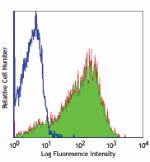
PHA-activated human peripheral blood lymphocytes stained wit... -
FITC anti-human CD69
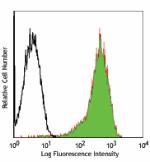
PMA + ionomycin stimulated (6 hours) human lymphocytes stain... -
PE anti-human CD69
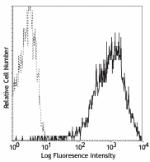
PMA + ionomycin stimulated (6 hours) human lymphocytes stain... -
PE/Cyanine5 anti-human CD69
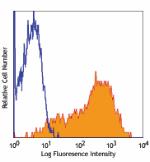
PHA-activated human peripheral blood lymphocytes stained wit... -
APC anti-human CD69
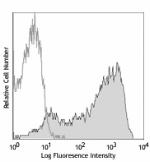
PMA+ionomycin-stimulated (5hours) human peripheral blood lym... -
APC/Cyanine7 anti-human CD69

PMA + Ionomycin stimulated (6 hours) human peripheral blood ... -
PE/Cyanine7 anti-human CD69
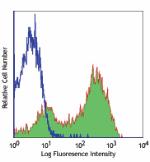
PMA+ionomycin activated human peripheral blood lymphocytes s... -
Alexa Fluor® 488 anti-human CD69
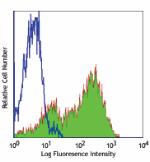
PMA+ionomycin activated human peripheral blood lymphocytes s... -
Alexa Fluor® 647 anti-human CD69
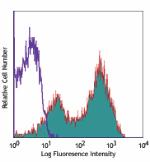
PMA+ionomycin activated human peripheral blood lymphocytes s... 
Confocal image of human lymph node sample acquired using the... 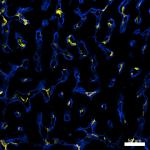
Confocal image of human liver sample acquired using the IBEX... -
Pacific Blue™ anti-human CD69

PMA+ionomycin-stimulated human peripheral blood mononuclear ... -
Alexa Fluor® 700 anti-human CD69
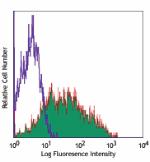
PMA + Ionomycin-stimulated (5 hours) human peripheral blood ... -
Biotin anti-human CD69
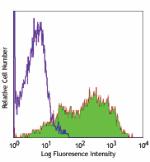
PHA-stimulated human peripheral blood mononuclear cells (day... -
PerCP/Cyanine5.5 anti-human CD69

PMA+ ionomycin stimulated (6 hours) human peripheral blood l... -
PerCP anti-human CD69
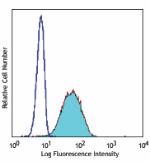
PMA + Inonomycin-stimulated (5 hours) human peripheral blood... -
Brilliant Violet 421™ anti-human CD69
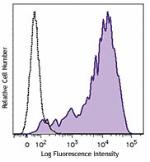
Human peripheral blood lymphocytes were stimulated with PMA ... -
Brilliant Violet 785™ anti-human CD69
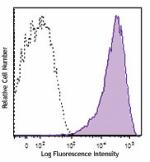
Human peripheral blood lymphocytes were stimulated with PMA ... -
Brilliant Violet 650™ anti-human CD69
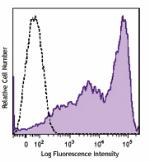
PMA + ionomycin-stimulated (6 hours) human peripheral blood ... -
Brilliant Violet 510™ anti-human CD69
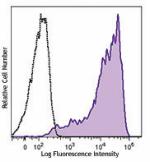
Human peripheral blood lymphocytes were stimulated with PMA+... -
Brilliant Violet 605™ anti-human CD69
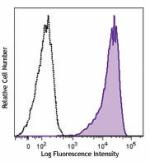
PMA+ ionomycin-stimulated (6 hours) human periphe... -
Purified anti-human CD69 (Maxpar® Ready)

Human PBMCs were incubated for 6 hours in media alone (botto... 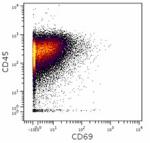
-
PE/Dazzle™ 594 anti-human CD69
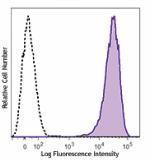
PMA + ionomycin-stimulated (6 hours) human peripheral blood ... -
Brilliant Violet 711™ anti-human CD69
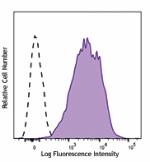
PMA + ionomycin-stimulated (six hours) human peripheral bloo... -
APC/Fire™ 750 anti-human CD69
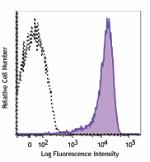
Human peripheral blood lymphocytes were stimulated with PMA ... -
TotalSeq™-A0146 anti-human CD69
-
TotalSeq™-B0146 anti-human CD69
-
TotalSeq™-C0146 anti-human CD69
-
Brilliant Violet 750™ anti-human CD69

PMA+ ionomycin stimulated (6 hours) human peripheral blood l... -
KIRAVIA Blue 520™ anti-human CD69

PMA + ionomycin stimulated human peripheral blood lymphocyte... -
Spark NIR™ 685 anti-human CD69 Antibody

Human peripheral blood lymphocytes were stimulated with PMA+... -
PE/Fire™ 640 anti-human CD69

PMA+ionomycin activated human peripheral blood lymphocytes w... -
Spark YG™ 581 anti-human CD69

PMA+ionomycin activated human peripheral blood lymphocytes w... -
TotalSeq™-D0146 anti-human CD69
-
APC anti-human CD69

Typical results from Cell Activation Cocktail (without Brefe... -
Spark Blue™ 550 anti-human CD69
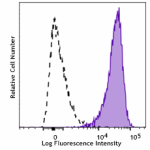
Human peripheral blood lymphocytes were stimulated with PMA... -
PE anti-human CD69
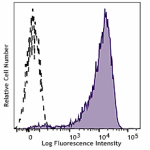
Typical results from Cell Activation Cocktail (without Brefe... -
Spark Red™ 718 anti-human CD69

PMA+ ionomycin stimulated (6 hours) human peripheral blood l... -
GMP PE anti-human CD69
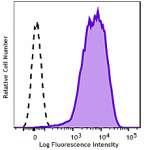
Typical results from Cell Activation Cocktail (without Brefe... -
PE/Fire™ 810 anti-human CD69

PMA+ ionomycin stimulated (6 hours) human peripheral blood l... -
PE/Fire™ 744 anti-human CD69

Human peripheral blood lymphocytes were stained with anti-hu... 
PMA+ionomycin activated human peripheral blood lymphocytes w... -
Spark PLUS UV395™ anti-human CD69

Human peripheral blood lymphocytes were stimulated with PMA/... -
Spark Blue™ 574 anti-human CD69 (Flexi-Fluor™)
-
GMP APC anti-human CD69

Typical results from Cell Activation Cocktail (without Brefe...
 Login/Register
Login/Register 













Follow Us